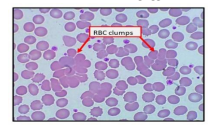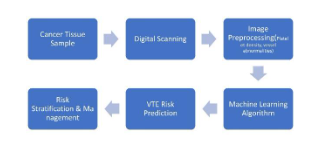
Keywords: Acetabular labrum, Osteoarthritis, Image analysis
Introduction: The acetabular labrum plays an important role in hip joint biomechanics. However, its neurovascular characteristics remain to be fully elucidated [1–5]. Previous studies on labral vascularity and innervation were largely descriptive, with no defined quantification of regional and zonal neurovascular distribution [1–5]. Therefore, this study aimed to analyze the regional and zonal distribution of labral neurovascularity. Materials and Methods: 124 labral sections from 16 cadaveric hips. Immunostaining of labral vascularity and innervation was done using low affinity nerve growth factor (p75) for labral innervation and vascular alpha-smooth muscle actin (αSMA). Neurovascular mapping was performed using FIJI (Figs 2. A). Results: The Wilcoxon Signed Rank Test revealed that the density of blood vessels and sensory innervation per mm² was significantly higher in the outer labral zones across all anatomical quadrants (superior,anterior, inferior, and posterior (P < 0.05) (figure 1. A-B). The acetabular labrum was well vascularized and innervated across all regions. Conclusion: Neurovascular mapping showed that the majority of α-SMA and p75 labeling was present within the outer labral zone, highlighting a peripheral predominance of neurovascular elements. These findings provide a quantitative basis for understanding the structural and functional organization of labral neurovascularity and may have implications for healing potential and surgical repair strategies.
Figure 1. Wilcoxon signed-rank testing showed significantly higher

densities of α-SMA–positive blood vessels and p75–positive sensory nerves in the outer labral zone compared with the inner zone across all anatomical quadrants (P < 0.05).

Figure 2. Quantification of sensory nerves with ImageJ Cell Counter

(A). Representative p75-positive nerves and α-SMA–positive vessels (B–C). Scale bars: 100 μm
References:
1- Kalhor, M. et al., 2010. Vascular supply to the acetabular labrum. JBJS, 92(15), pp. 2570-2575.
2- Petersen, W., Petersen, F. & and Tillmann, B., 2003. Structure and vascularization of the acetabular labrum with regard to the pathogenesis and healing of labral lesions.. Archives of orthopaedic and trauma surgery, 123(6), pp. 283-288.
3- B. T. Kelly, G. S. Shapiro, C. W. Digiovanni, R. L. Buly, H. G. Potter, & J. A. Hannafin, Vascularity of the hip labrum: A cadaveric investigation. Arthroscopy – Journal of Arthroscopic and Related Surgery, 21 (2005) 3–11
4- Kapetanakis, S., Dermon, A., Gkantsinikoudis, N., Kommata, V., Soukakos, P. and Dermon, C.R., 2017. Acetabular labrum of hip joint in osteoarthritis: A qualitative original study and short review of the literature. Journal of Orthopaedic Surgery, 25(3), p.2309499017734444.
5-Shirai, Y., Wakabayashi, K., Wada, I., Tsuboi, Y., Ha, M. and Otsuka, T., 2017. Magnetic resonance imaging evaluation of the labrum to predict acetabular development in developmental dysplasia of the hip: A STROBE compliant study. Medicine, 96(21).
Biography: Dr. Abdulaziz Alomiery has completed his PhD in Clinical human anatomy from the University of Edinburgh. He is an assistant professor at the basic science department at King Saud University.
#UCJournals #NeurovascularMapping #AcetabularLabrum #HipAnatomy #OrthopedicSurgery #HipSurgery #LabralTear #HipPreservation #SportsMedicine #OrthopedicsResearch #MusculoskeletalHealth #HipJoint #Arthroscopy #HipArthroscopy #LabrumRepair #HipFunction #JointHealth #SurgicalAnatomy #VascularMapping #NerveAnatomy #ClinicalAnatomy #OrthopedicResearch #HipPain #LabralPathology #MinimallyInvasiveSurgery #HipBiomechanics #JointStability #CartilageRepair #HipReconstruction #NeurovascularStudy #LabrumHealing #FunctionalAnatomy #HipDisorders #OrthopedicInnovation #SurgicalTechniques #HipImaging #OrthopedicEducation #HipRehab #HipInjury #LabrumPathophysiology #AnatomicalResearch #HipSurgeons #MedicalResearch #ClinicalSurgery #HipStudies #JointPreservation #HipHealth #SportsInjuries #LabrumSurgery #NeurovascularInsights #PrecisionSurgery #MusculoskeletalResearch



